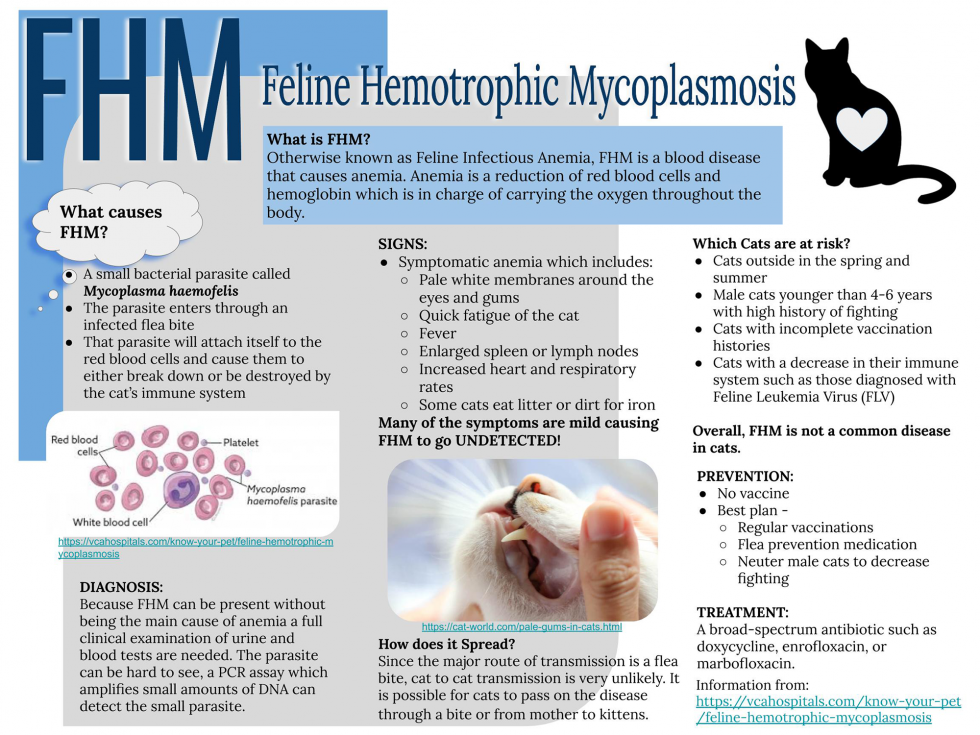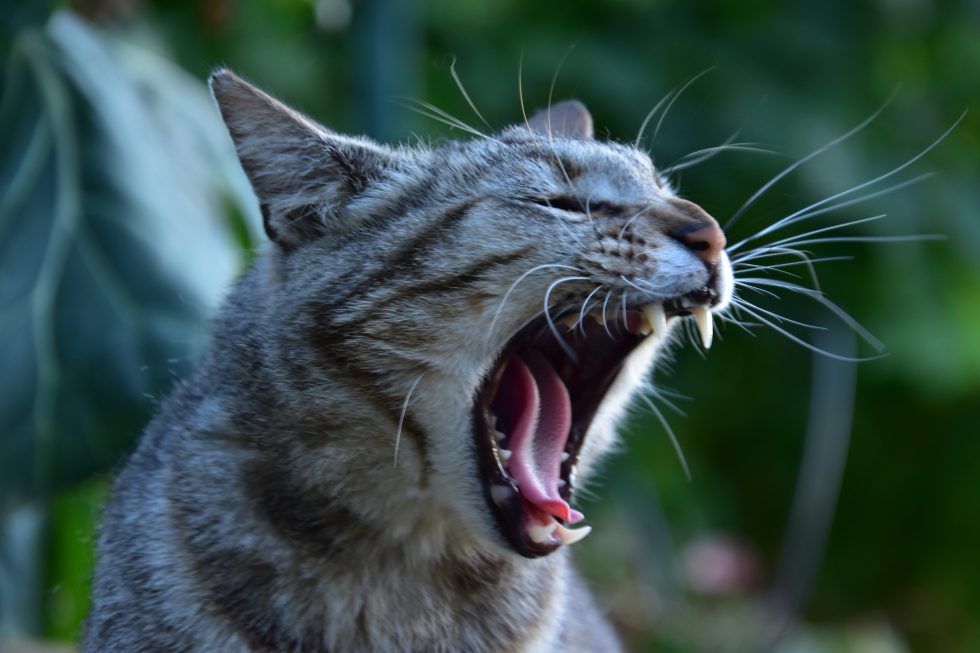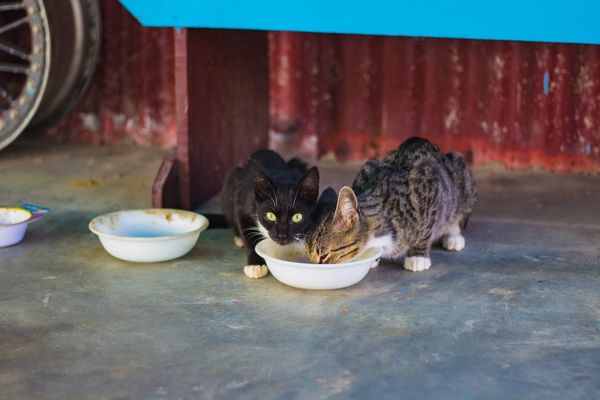Hemotrophic Mycoplasmosis in Cats
Hemotrophic mycoplasmosis is an infection of the red blood cells. There are two forms that affect cats: M. haemofelis, the most severe form, or M. haemominutum, the less severe form. This disease may also be referred to as haemobartonellosis, feline infectious anemia or feline hemotrophic mycoplasmomsis (FHM).
Some cats will show no symptoms of infection, while others may show minor symptoms of anemia, or in some cases more severe symptoms. Hemotrophica Mycoplasmosis can cause death if undetected and left untreated.
Find out more about how to spot the symptoms and treat a cat with Hemotrophic Mycoplasmosis below!

Symptoms
- Sudden onset of fever
- Depression
- Weakness
- Lack of appetite
- Whitish to pale purple gums
- Enlarged spleen or lymph nodes
- Increased heart rate
- Some cats may try to eat dirt to increase iron intake
Causes
The mycoplasma bacteria is transmitted by insects such as ticks and fleas that have picked up the bacteria from other animals. It can also be passed to kittens from the mother or from fighting between animals (body fluid exchange).
It is most common in cats who live outdoors in warm weather, male cats who have been fighting and immunocompromised cats with illnesses such as FIV.
Diagnosis & treatment
Your veterinarian can test for Hemotrophic Mycoplasmosis with a physical exam and extensive blood and urine tests. You’ll need to provide as much information as possible to your vet about your cat’s health and activities.
If this disease is caught early, your cat will be treated with broad spectrum antibiotics and sent home. If anemia is also present your cat may need additional treatments such as steroid therapy.
Severely anemic, or very ill cats will be hospitalized to receive treatments such as fluids or blood transfusions to stabilize the cat. Left untreated, this disease can have fatal results – 30 percent of cats with the severe form of infection die due to complications.
Ongoing management
Your cat will need to be checked by your veterinarian for progress within a week of treatment, when a red blood cell count will be performed to examine for mycoplasma levels.
Since infected cats may remain a carrier even after recovery, you will need to keep your cat indoors for a period of time and monitor any other cats in your home for possible infection. This condition can affect dogs, but it can’t be transmitted between cats and dogs.
Prevention
Since there’s no vaccine for Hemotrophic Mycoplasmosis, the best prevention methods are to ensure cats are neutered and vaccinated as always. Flea bites are the most common route to transmission – so keeping up with regular treatment for parasites is very important and the most effective prevention method.
We hope you have found our articles useful. All of our education and advice is available for free, wherever you are in the world.
As a charity we rely on donations to allow us to continue helping cats in our local community, and to keep updating this site with useful information.
Any donation to support our work at Adopt Meow is greatly appreciated.





